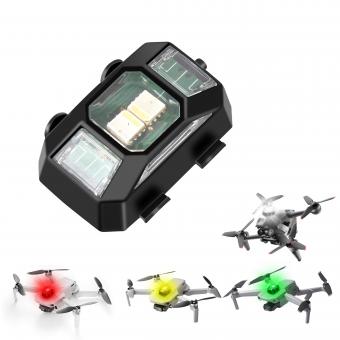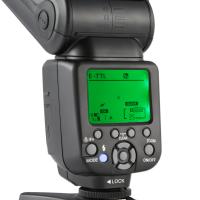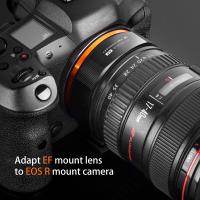How To Get Ring Light In Eyes?
When it comes to photography and videography, capturing that stunning ring light reflection in the eyes has become a popular trend. This is often referred to as "catchlight," and it adds a professional and captivating touch to your shots. Whether you're a professional photographer, an influencer, or simply someone who loves to capture beautiful photos, achieving that mesmerizing ring light effect in the eyes is a technique worth mastering. In this article, we will explore various methods, tips, and tools to help you get that perfect ring light reflection in the eyes.

Understanding the Basics of Ring Light Reflection
Before diving into the techniques, it’s essential to understand what a ring light is and why it creates such a distinctive effect. A ring light is a circular lighting device that emits even, soft light, reducing shadows and creating a flattering appearance. When positioned correctly, it creates a halo of light around the subject, with a discernible circular reflection in the eyes. This effect can make the eyes look more vibrant and engaging.
Essential Tools and Equipment
To achieve the ring light reflection in the eyes, you need specific tools:
1. Ring Light:
Invest in a good quality ring light. These come in various sizes and intensities. A larger ring light will produce a larger, more obvious catchlight in the eyes.
2. Camera:
A camera with good resolution is necessary to capture the details. While professional cameras are preferred, modern smartphones with high-quality cameras can also be used.
3. Stand or Tripod:
A stable stand or tripod to hold your ring light and camera in place ensures consistency and reduces blurriness.
Step-by-Step Guide to Achieve Ring Light Eyes
1. Position Your Ring Light:
Place the ring light around the lens of your camera. This setup ensures that the light source is centered in front of your subject's face, which is crucial for producing the ring reflection in the eyes.
2. Adjust the Brightness:
Adjust the brightness of your ring light based on your environment. If your surroundings are well-lit, you might need a lower intensity, and vice versa for dimmer environments. Most modern ring lights come with adjustable brightness settings.
3. Control the Distance:
The distance between the subject and the ring light significantly impacts the effect. Ideally, the ring light should be about 1 to 2 feet away from the subject. Too close, and the light might be too harsh; too far, and the catchlight might not be prominent.
4. Direct the Gaze:
Have your subject look directly at the camera lens. By doing this, the ring light reflection will appear in the center of the pupil. If they look away or at an angle, the reflection might not be symmetrical.
5. Adjust the Camera Settings:
To capture the best details, set your camera to a low f-stop (wide aperture), which allows more light to hit the sensor. A medium ISO setting ensures a balance between brightness and noise. Shutter speed should be adjusted to freeze motion without overexposing the image.
Techniques for Maximizing the Ring Light Effect
1. Eye Makeup:
To enhance the ring light reflection, consider makeup techniques that emphasize the eyes. Highlighting the inner corners and using darker shades on the outer corners can make the ring reflection stand out more prominently.
2. Use of Reflectors:
Sometimes, using additional reflectors can help bounce light into the eyes, enhancing the overall effect. Reflectors can be positioned below the subject’s face to eliminate shadows and make the eyes pop.
3. Multiple Angles:
Experiment with different angles. While a direct gaze is typically best for a clear ring reflection, sometimes slight adjustments in the subject's head angle can produce unique and captivating effects.
Post-Processing Enhancements
Even with perfect lighting and camera settings, some minor post-processing might be required to enhance the ring light reflection in the eyes.
1. Photo Editing Software:
Use editing software like Adobe Photoshop or Lightroom to fine-tune the contrast, brightness, and sharpness of the image.
2. Enhancing Catchlights:
Use the dodge tool to lighten the catchlights in the eyes, making them more prominent. Ensure that the adjustments look natural and not overdone.
3. Eye Color and Brightness:
Slightly enhancing the color and brightness of the eyes can complement the ring light effect. Tools like the brush tool in Lightroom allow precise adjustments to specific areas of the image.
Common Mistakes to Avoid
- Overexposure:
Too much light can wash out not just the catchlight but also the subject’s features. Always monitor the light intensity and camera exposure settings.
- Incorrect Positioning:
If the ring light is not centered around the camera lens, the reflection might be off-center, which can look unprofessional.
- Ignoring Eye Direction:
Ensure the subject’s eyes are directed at the lens. Slight deviations can cause asymmetrical reflections or even miss the catchlight altogether.
Practical Applications
Understanding how to create a ring light reflection in the eyes is invaluable for various photography and videography applications:
- Portrait Photography: Makes the eyes standout, adding a professional touch.
- Beauty and Fashion Shoots: Enhances the overall appeal of the model, making makeup and features pop.
- Vlogging and Streaming: Engages the audience with captivating visuals.
- Product Photography: Adds a sophisticated look to items that reflect light, like jewelry or eyewear.
Conclusion
Achieving the perfect ring light reflection in the eyes involves a combination of the right tools, thoughtful positioning, and careful adjustments. While the tools and techniques are relatively straightforward, mastering this effect requires practice and a keen eye for detail. With the right approach, this technique can transform your photos and videos into visually stunning work that captivates and engages viewers. Whether you are a seasoned professional or a passionate hobbyist, incorporating ring light reflections into your visual repertoire can significantly elevate your artistic expression.


































